Coffee prices to continue rising over the next two years: Experts
“Local markets are thriving with the growing demand and most of the farmers would be in a good position where they sell out every year and earn higher profits. They don’t have to sit on stock, they don’t have to wait for a trader to pick up any,” said Viggnesh V, a coffee industry consultant.
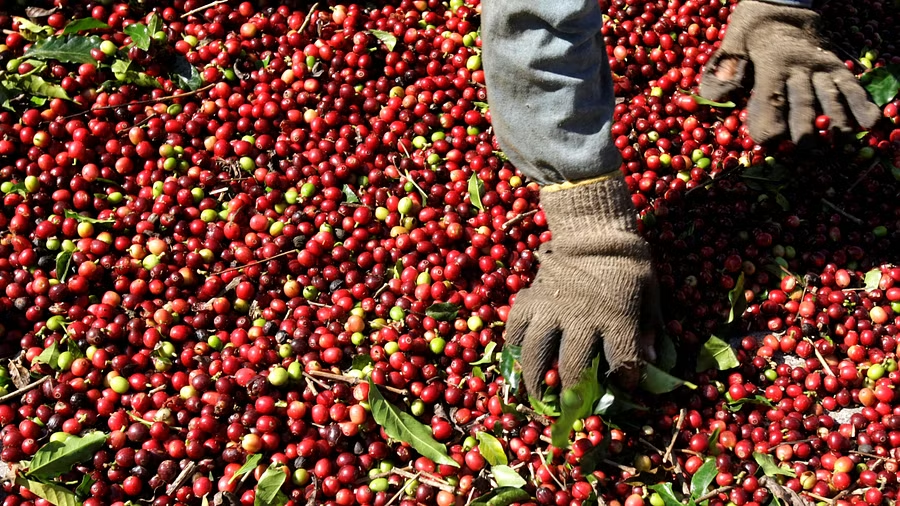
A worker selects arabica coffee beans at Conquista farm in Alfenas in the southern Brazilian city of Minas Gerais. Credit: Reuters photo
Bengaluru:
Extreme climate events leading to untimely rains, fires and droughts across South Asia and Latin America have fueled worries for the already surging coffee prices. This alongside Indian consumers’ rising preference towards coffee as a beverage has proven beneficial for the producers.
“Local markets are thriving with the growing demand and most of the farmers would be in a good position where they sell out every year and earn higher profits. They don’t have to sit on stock, they don’t have to wait for a trader to pick up any,” said Viggnesh V, a coffee industry consultant.
Prices will continue to rise in the foreseeable future, stakeholders and industry experts told DH.
“It is most likely to plateau at max after two years because at the point when it crosses a particular set, it will become completely unaffordable for anyone in the value chain,” Viggnesh said.
Coffee prices, mainly Arabica beans, have touched their highest prices in 13 years due to persistent supply disruptions. Prices are up roughly 40 per cent in 2024 as shortages of the cheaper robusta beans have evoked demand for the arabica variety favoured by specialty chains.
Global scenario
The rally in coffee prices has been gathering pace due to erratic climate in top producer Brazil. The sporadic rains and warmer temperatures have hurt the South American nation’s production.
Prices for the cheaper robusta variety, which is also produced by Brazil have also jumped. This, in turn, has left companies and consumers paying for pricier coffee, and retailers have been scrambling to secure beans.
Vietnam, the second largest producer of coffee is also facing excess rain coupled with farmers shifting to the production of Durian, a fruit widely popular in south Asia which is turning out to be more profitable than coffee.
Indian market expected to grow
The two main varieties of coffee manufactured in India are Arabica and Robusta. Arabica has more demand than robusta coffee due to its mild aromatic flavour. According to the Food and Agriculture Organization of India, about 70 per cent of the total coffee produced in India is exported. India ranks fifth in total coffee exports in the world.
Karnataka produces around 71 per cent of total coffee in India, a majority of which is Robusta. The rest of the production comes from Kerala, Tamil Nadu and the northeastern region. India produced 3,74,200 metric tonnes (MTs) in 2023-24, out of which Karnataka contributed 2,66,885 MT.
India’s coffee market was valued at $478 million in 2022 and is expected to reach $1.2 billion by 2032 at a compound annual growth rate (CAGR) of 9.87 per cent during the forecast period 2024-2033, according to data by Custom Market Insights.
However, several challenges cloud the optimistic future of coffee producers, shortage of labour being one of them. “Almost 65 per cent of our total cost on an estate is labour cost, which has increased steadily over the past few years. 70 per cent of Brazilian coffee crop is done mechanically because their areas are flat, whereas ours are on slopes with coffee trees which makes us highly dependent on labour,” said Jacob Mammen, managing director of Badra Estates located in Chikkamagaluru.
Climate change has been another headwind for coffee producers and experts suggest that it is here to stay. Sudden rain spells have in fact damaged the coffee crops or contributed to low quality.
Some industry insiders say the impact is minimal for now. Suhas Dwarkanath of Benki Coffee said, “To be honest, there have been difficulties in terms of water, temperatures, but it has not affected production majorly because it is not something new.”
However, data by the Coffee Board of India shows a marginal decline in coffee production in India. India produced 3,74,200 MTs in 2023-24 against 3,52,000 MT in 2022-23.
“Now that the middle class is growing and disposable income is increasing, India will become one of the biggest consumers of coffee in the next 3-5 years and the transition can already be seen,” added Benki’s Dwarkanath.
source: http://www.deccanherald.com / Deccan Herald / Home> Business / by Sonal Choudhary / October 21st, 2024
Indian coffee exports top ₹10,000 crore in FY24 on soaring robusta prices
Supply issues drive prices higher, shipment volumes drop marginally.

Thanks to the surging trend in global Robusta prices, India’s coffee exports for the financial year ending March 2024 touched a new high in value terms.
Despite a marginal decline in the volumes, shipments were at a new record. In fact, financial year 2023-24 was the third consecutive year during which Indian coffee shipments registered a new record.
In dollar terms, Indian coffee shipments registered an increase of 12.5 per cent to $1.26 billion over $1.12 billion in the 2022-23 fiscal. Similarly in the rupee terms, exports were up 16 per cent at ₹10,491 crore over ₹9,033 crore.

In quantity terms, the exports saw a marginal decline of 2.5 per cent at 3.88 lakh tonnes over 3.98 lakh tonnes in 2022-23.
Supply issues
The global robusta prices are at a three-decade high on supply issues in the top producing countries such as Vietnam and Brazil. This has worked to the advantage of the Indian coffee sector, where robusta is the most widely-produced variety. As a result of high robusta prices, the per unit realisation for Indian exporters went up by about a fifth to ₹2.7 lakh per tonne during 2023-24 compared with ₹2.26 lakh in the previous financial year.
“A combination of factors such as the good market prices for Indian coffee, supply side disruptions in Brazil and Vietnam have helped push up the exports” said K G Jagadeesha, Secretary and CEO, Coffee Board. “Our export quantity in the last three years has increased principally from instant coffee,” he said.
India exports over about two-thirds of the around 3.5 lakh tonnes of coffee produced in the country. It also imports cheaper robusta coffee to re-export them after value addition.
Ramesh Rajah, President, Coffee Exporters Association, said, most of the increase in export value during financial year 2023-24 has come from the robustas. The demand is good and the shipments during the last two quarters of the financial year have been better than the earlier quarters.
Farmgate prices
Farmgate prices of robustas in India have overtaken the arabicas in the recent weeks, tracking the global uptrend. Robusta parchment prices are ruling at ₹14,000-14,500 per 50 kg bag, while the robusta cherry, the widely-produced coffee variety in the country, is ruling at ₹8,500-8,950. Arabica cherry coffee is hovering around ₹8,000-8,300 per bag, while Arabica parchment is ruling at around ₹13,900-14,300.
In fact, Indian robusta parchment AB is commanding a premium of $700-750 a tonne over the London terminal prices, while the premiums for robusta cherry is hovering around $350-400 per tonne.
Italy, Germany, Russia and UAE are among the major destinations for the Indian coffees. For the crop year 2023-24 starting October, the Coffee Board, in its post-blossom estimates, has projected a crop size of 3.74 lakh tonnes over the previous year’s final estimates of 3.52 lakh tonnes.
source: http://www.thehindubusinessline.com / Business Line, The Hindu / Home> Economy> Agri Business / by Vishwanath Kulkarni / April 02nd, 2024
An 1852 Kodava house to open at DakshinaChitra Museum in Chennai on Oct. 23
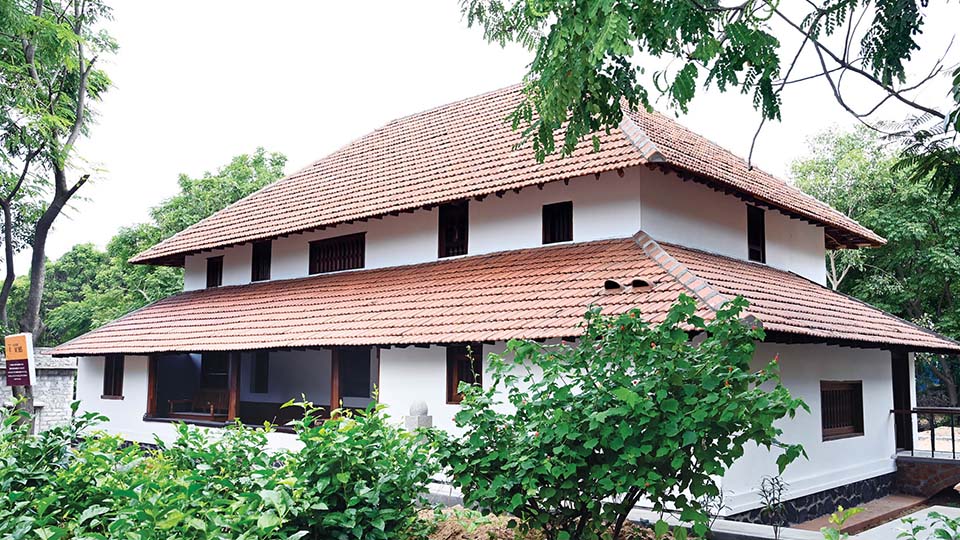
Mysuru:
DakshinaChitra, the living-history museum and a project of Madras Craft Foundation, is set to unveil its 19th addition — a meticulously restored 1852 Kodava house from Coorg (Kodagu).
Located at DakshinaChitra Museum on East Coast Road, Muttukadu, Chengalpet district, Tamil Nadu, the house will officially open on Oct. 23 at 11.30 am, with Ju Seong Kyu, the Managing Director of Mobis India Foundation (the CSR arm of Hyundai Mobis) presiding over the event.
The Kodavas, a unique community known for their distinct customs, heritage, attire and cuisine, will have these aspects vividly showcased within the house.
Kodagu, nestled in the Western Ghats, is renowned for its rich, forested, mountainous terrain, and the Kodavas have long been its protectors, safeguarding its wildlife and biodiversity for centuries.
A dedicated exhibition on the Western Ghats will highlight the global importance of conserving these biodiversity hotspots. Kodava music and dance, a cherished part of the community’s culture, will also be showcased.
A Kodava troupe from Kodagu will perform on both Oct. 23 and 24 to celebrate the house’s inauguration.
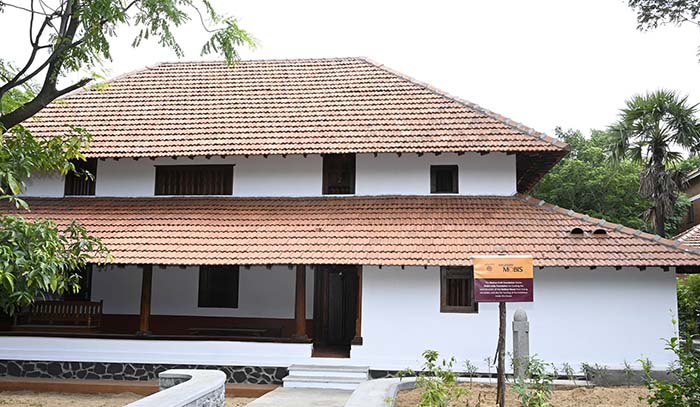
The Kodava House exhibition has been curated by Gigi Scaria, while the Western Ghats exhibition has been curated by Shekar Dattatri and Saravana Kumar.
Contributions from Sandooka: The Living Museum of Kodava Culture, founded by retired IAS Officer Rathi Vinay Jha of the Codanda family, enrich the display with images, content and videos. She is also the Life Trustee of the Madras Craft Foundation.
The construction of the Kodava house and the exhibition has been entirely supported by Mobis India Foundation. The opening ceremony will conclude with a traditional Kodava folk performance.
Rathi Vinay Jha and Founder of Madras Craft Foundation and DakshinaChitra Museum Dr. Deborah Thiagarajan will address the gathering. Head of CSV Strategy Team, HQ Mobis Lee Chang Jun and Kim Kyung Jin from the CSV Strategy Team, HQ Mobis will be present.
source: http://www.starofmysore.com / Star of Mysore / Home> News / October 20th, 2024
Anitha Nanda: The call of coffee

Anitha Nanda Appanervanda, a 61-year-old coffee farmer from Coorg, Karnataka, stands as a symbol of determination, sustainability, and empowerment. Over the course of her 22-year journey, Anitha has not only established a successful coffee farm but has also transformed the lives of hundreds of women in her community, fostering a culture of eco-friendly farming practices.
A passion for farming rooted in childhood
Born and raised in Bengaluru, Anitha’s passion for farming took root in her childhood. Every school vacation, she would visit her grandfather’s coffee estate in Coorg, a place that quickly became her second home. The vast expanse of coffee plants, the rich biodiversity, and the sense of peace found in the hills left an indelible mark on her young mind. “From those early days, I knew I wanted to return to the hills and be part of coffee farming,” she fondly recalls. This deep connection to the land paved the way for her lifelong dedication to sustainable agriculture.
Her dream started to take shape after she married Nanda Belliappa, a fellow coffee farmer from Coorg. Together, they took over the family-owned Surya Kiran Estate, where Anitha embarked on her mission to blend her passion for farming with eco-friendly practices.
Despite her enthusiasm, the road to success was not easy. In the early years, Anitha and her husband faced numerous challenges. Coffee farming requires patience, and the couple struggled to produce good harvests from their robusta coffee plants. “It took almost 10 years before we saw good yields,” she shares, highlighting the perseverance and dedication it took to build the farm.

Their breakthrough came when they adopted intercropping techniques, blending coffee cultivation with black pepper. This method not only boosted productivity but also contributed to a more sustainable farming system. Today, they cultivate 110 acres of robusta and 40 acres of arabica coffee, a testament to their hard work and commitment to innovation in farming.
Anitha’s approach to farming is deeply rooted in her desire to protect the environment. Situated in the biodiversity-rich region of Coorg, her coffee estate is more than just a farm – it is a sanctuary for wildlife. Her coffee plants grow under the protective canopy of rainforest trees, a practice known as shade-grown coffee farming. This method helps maintain the natural balance of the ecosystem, providing shelter for birds, insects, and other wildlife.
“We must protect this land from climate change and global warming,” she asserts, emphasising the role that sustainable practices play in preserving the environment for future generations. Anitha’s farm has been awarded Rainforest Alliance Certification, recognising her dedication to eco-friendly farming.
While she remains deeply connected to traditional farming methods, Anitha is not afraid to embrace modern technology when it benefits the farm. She uses machines for irrigation and weeding, which helps reduce labour and improve efficiency. However, the core of her farming philosophy remains grounded in traditional practices that have been passed down through generations.
Anitha’s success is not just about coffee. She has diversified her farm by growing black pepper and areca nuts, a strategy that has made her farm more resilient and sustainable. This diversification has allowed her to reduce dependency on a single crop and has opened up new streams of income for her family.
Empowering women and building a community
Anitha’s contributions go far beyond her own farm. As an active member of Biota Coffee FPC and the secretary of the Codagu Women’s Coffee Awareness Body (CWCAB), she has empowered around 400 women in her community. This group, which was founded in 2002 during a time when coffee prices were low, has provided women with the support they need to embrace eco-friendly farming practices and achieve fair prices for their crops.
For Anitha, farming is not just a livelihood – it’s a community effort. Through CWCAB, she has helped women coffee farmers promote sustainable farming and spread awareness about the benefits of coffee. Each year, on International Coffee Day, they celebrate by giving away free coffee to locals and tourists, a gesture that symbolises their pride in the hard work that goes into every cup.
Anitha’s dedication to sustainable farming has not gone unnoticed. In 2020, she received a Certificate of Appreciation from the Indian Institute of Spices Research (ICAR-IISR) for her pioneering work in intercropping black pepper with coffee. “It was a proud moment,” she recalls, noting that it validated the years of effort she had poured into her farm.
Despite her success, Anitha continues to innovate and learn. She has recently taken up beekeeping, recognising the crucial role bees play in pollination and the overall health of her farm. This new venture is another example of her commitment to maintaining a healthy, balanced ecosystem.

Coffee Farming: A source of Income and Sustainability
Sustainable farming has proven to be both environmentally and financially rewarding for Anitha. She cultivates robusta coffee, which has been particularly profitable in recent years. Producing around 19-20 bags per acre, she earns Rs. 10,000 per bag, while her arabica parchment fetches a higher price at Rs. 16,000 per bag. This strong financial return is a direct result of her commitment to eco-friendly practices.
While she does use some fertilisers, Anitha avoids harmful chemicals, focusing instead on maintaining native trees and enhancing soil health. Her approach blends the best of traditional and modern farming methods, ensuring that her land remains fertile and productive for generations to come.
A legacy of passion and purpose
Anitha Nanda’s journey from city life to becoming a successful coffee farmer in Coorg is a testament to her passion for the land and her determination to create a better future for her community. Through her sustainable farming practices, she has not only preserved Coorg’s rich biodiversity but has also empowered hundreds of women to take control of their livelihoods.
For Anitha, coffee is not just a crop – it’s a legacy, a connection to her roots, and a vision for a sustainable future. Her story is a powerful reminder that with hard work, care for the environment, and a strong community, anything is possible.
source: http://www.theorganicmagazine.com / The Organic Magazine / Home / by Tanishq Verma
Coffee Dasara in Madikeri: Growers made aware of changes in cultivation, facilities, finance
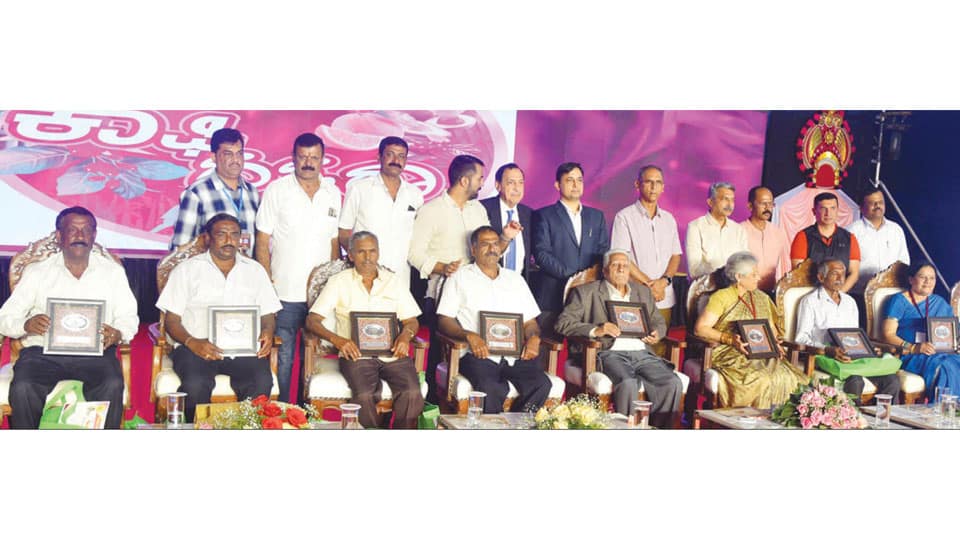
Madikeri:
The first-ever ‘Coffee Dasara’ launched at Gandhi Maidan as part of the recently held Madikeri Dasara was a ground-breaking initiative to elevate the coffee industry and engage the farming community. This event raised awareness about the transformative changes in coffee cultivation and the various facilities available to growers.
Conceptualised by Dr. Manthar Gowda, MLA from Madikeri Constituency, the two-day event on Oct. 7 and 8 featured a diverse array of coffee enterprises and 34 departmental stalls, all dedicated to equipping growers in the district with essential information and resources.
Numerous organisations also participated, setting up stalls to offer supplementary materials and insights related to various agricultural products, including coffee, thereby fostering a spirit of collaboration and innovation in the agricultural sector.
Inaugurating the Coffee Dasara, Agriculture Minister Cheluvarayaswamy affirmed the Government’s commitment to standing by farmers to ensure the comprehensive development of all agricultural activities, particularly coffee cultivation, which serves as the backbone of Kodagu’s economy.
He noted that coffee cultivation does not fall under the purview of the Agriculture Department or the State Government. In various regions of the State, paddy cultivation is widespread, supported by reservoirs. However, water availability often decreases as crops mature, leading to difficulties for farmers, he said.
“To tackle this issue, the State Government has decided to create farm ponds (krishi honda) in command areas, which will aid farmers during water shortage. The Government plans to grant permission for the construction of 250 farm ponds in Kodagu district,” he assured.
As the chief guest, Minister for Health and Family Welfare, Dinesh Gundu Rao, stressed that no region can escape the wave of modernisation. He underscored the need for balanced development while maintaining cultural roots.
Emphasising the promotion of coffee cultivation and industry, he advocated for the establishment of local coffee brands and raising awareness about domestic coffee consumption.
Virajpet MLA Ajjikuttira S. Ponnanna praised the focus on coffee cultivation during the Madikeri Dasara celebrations, expressing hope that importance of coffee would continue to be emphasised in future Dasara festivals, spreading its significance throughout State.
MLA Dr. Manthar Gowda highlighted the numerous challenges faced by coffee growers and called for support, urging Ministers not to permit the conversion of paddy fields into non-agricultural land to preserve Kodagu’s agricultural heritage.
South Indian filter coffee
Coffee Board Chairman Dinesh Devabrinda announced a plan ‘from farm to market,’ aimed at doubling coffee production over the next decade while maintaining quality.
He noted that the Government of India recognises the significance of coffee and has allocated Rs. 307 crore to the Coffee Board for the development of the coffee industry. Of this, Rs. 19 crore will be provided to coffee growers in Kodagu through various assistance schemes.
Currently, the average coffee consumption per Indian is 30 cups. If this figure can be increased to at least 60 cups, internal coffee consumption could rise from 2,50,000 tonnes to 3,50,000 tonnes, significantly benefiting farmers.
He emphasised that South Indian filter coffee is among the best globally, and the Coffee Board is actively working on initiatives to promote this filter coffee on a worldwide scale.
Kodagu Deputy Commissioner Venkata Raja, Assistant Commissioner Vinayak Narwade, former MLC Veena Achaiah, Secretary of Karnataka Planters’ Association K. Rajiv Ganapathy, President of the Coorg Planters’ Association Nanda Belliappa, General Secretary of the Women’s Coffee Awareness Society Anita Nanda, Coffee Board Member Taluru Kishore Kumar, Coffee Board member, Kodagu Congress President Dharmaraj Uthappa, former President Vinod Shivappa, General Secretary of the Madikeri Dasara Committee B.Y. Rajesh Yellappa and others were present.
source: http://www.starofmysore.com / Star of Mysore / Home> News / October 16th, 2024
Thousands stand witness to Cauvery Tula Sankramana at Talacauvery
The chants of ‘Jai Jai Maatha, Cauvery Maatha’ and other devotional callings filled the morning air at Talacauvery and the rituals were led by priest Prashanth Achar and others.
Devotees taking part in the Cauvery Tula Sankramana. (Photo | ENS)
Madikeri :
The chants ‘Ukki Baa Cauvery’ broke the morning mist at Talacauvery as the sacrosanct event of Cauvery Tula Sankramana was witnessed by thousands of devotees.
The holy water gushed out from the ‘Kundike’ at 7.41 am, a minute later than the predicted time. Rituals followed the holy event and the temple towns of Bhagamandala and Talacauvery flourished with devotion on Thursday.
The chants of ‘Jai Jai Maatha, Cauvery Maatha’ and other devotional callings filled the morning air at Talacauvery and the rituals were led by priest Prashanth Achar and others.
The roads leading to Bhagamandala and Talacauvery were flooded with devotees from midnight hours even as hundreds of devotees dressed in traditional Kodava attire marched barefoot to the temple from Bhagamandala.
A few devotees even carried out ‘padayatra’ from Virajpet and the temple towns were witness to the endless devotions from thousands of devotees. While the astrologers predicted the holy gushing of water to take place at 7.40 am, the same was witnessed a minute later. Hundreds took a dip in the holy water even as arrangements were in place to distribute the holy water to the gathered devotees.
Alongside the arrangements extended by the district administration and police department, several volunteers and other organizations joined in to ensure smooth ongoing of the activities during the festivity.
Increased security was deployed by the police department. Under the leadership of SP K Ramarajan, four DySPs, 12 Inspectors, 32 PSIs, 350 constables, two KSRP, four DAR staff and others extended security to the devotees.
Mass feeding to the devotees was extended by Kodagu Ekikarana Members. Apart from the traffic jam, all necessary arrangements were made to ensure smooth visits of the devotees.
Several dignitaries including district in-charge minister Boseraju, MLAs AS Ponnanna, Dr Mantar Gowda, DC Venkat Raja and others were present during the sacrosanct event.
source: http://www.newindianexpess.com / The New Indian Express / Home> Karnataka / by Express News Service / October 17th, 2024
Cauvery Sankramana Festival at Kodava Samaja on Oct. 18
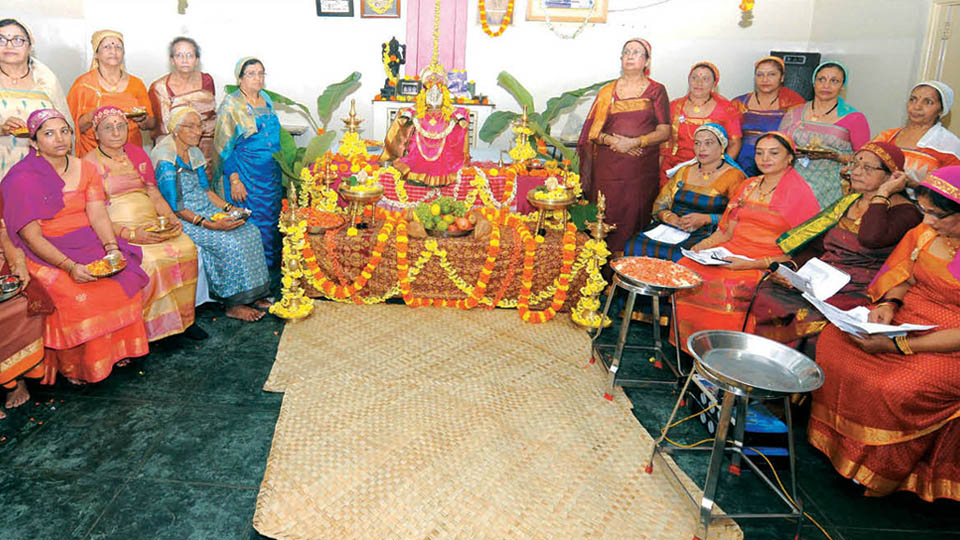
Mysuru:
Kodava Samaja, Mysuru, will be celebrating Cauvery (Kaveri) Sankramana Festival at the Samaja premises in Vijayanagar 1st Stage on Oct. 18.
Kani Puja will be performed at 10 am.
Holy water (Theertha) will be distributed to all the devotees present in the celebration.
All the devotees of Goddess Kaveri are requested to participate in Kani Puja, Festival celebration and also receive Theertha brought from Talacauvery, according to a release from K.A. Belliappa, Hon. Secretary of the Samaja.
source: http://www.starofmysore.com / Star of Mysore / Home> News / October 15th, 2024
How River Kaveri Inspired The Kodava Bridal Tradition
Legend says that when Goddess Kaveri left Agasthya, the force of her current turned around the pleats of Kodava women’s saris.

A Kodava bride (image courtesy: YouTube)
The mystery of the Kodavas
The source of the sacred river Kaveri is in Kodagu (Coorg) on the eastern slopes of the Western Ghats. Kodagu’s beautiful landscapes of thickly forested slopes, monsoon-fed streams, and abundant native flora and fauna are home to the Kodavas, a unique community with a martial lineage and customs that differ from their neighbors. The origins of the Kodavas who are primarily ancestor and nature worshippers remain shrouded in mystery – theories speculate they descended from a lost platoon of Alexander the Great’s soldiers or pre-Islamic Kurds who traveled from the present Turkey, Iran, and Iraq. None have been proven satisfactorily!
What sets the Kodavas apart from their southern neighbors is their traditional clothing. Men wear long black coats called kupsas, while women wear sarees draped quite differently from the traditional Indian style. This attire is best reflected at a Kodava wedding where, along with very distinctive jewelry, Kodava men and women showcase their unique cultural heritage and values.

A Kodava bride (image courtesy: YouTube)
The Legend of Kaveri
In Coorg, legend says that when an irate Kaveri left her husband the sage Agasthya, the Kodavas implored her to stay. She was adamant about leaving but promised to always remain with them in the form of a river, nourishing their land and giving them sustenance. When Kaveri left, the force of her current turned the pleats of the Kodava women’s saris around. To date, Kodava women wear their saris with the pleats behind, and one end wrapped under their left arm and pinned over the right shoulder.

How to drape a Kodava sari (image courtesy: Youtube)
Kodava brides wear their saris this way, with a long-sleeved blouse and a veil called a musku; elaborate Benarasi silks embroidered with motifs, in shades ranging from red to magenta are the preferred option. It is customary for a bride to wear either her mother’s or grandmother’s sari, most of which are preserved carefully over the years.
Our family to date uses my great-grandmother’s veil; tissue thin and delicate, yet surprisingly strong, and witness to many family weddings.

A Kodava bride (image courtesy: Shonali Madapa)
Inspired by nature
Kodava jewelry is inspired by nature – it is common to see patterns and designs representing the sun, moon, the serpent, flora and fauna, and in one instance specifically, the prickly skin of a jackfruit.
The jewelry is typically hollow, characterized by delicate repousse work–a method in which the metal is beaten from the inside into a desired shape or pattern. Gold studded with precious stones is primarily the metal of choice; silver is used only for the hands and feet.
What does stand out though is a clear design influence from an entirely different region. This remains as much of a mystery as are the origins of the Kodavas. The kokkethathi, a crescent-shaped pendant inspired by the moon, does bear a similarity to a pendant found in Oman, as does the peechai kathi, similar to the traditional daggers worn by Omani men. Perhaps this lends credence to one of the many theories on the origins of the Kodavas–a tribe who migrated to India many centuries ago, from the Middle East via land and sea.
Kodava Brides: The Sacred Seven
Tradition dictates Kodava bridal jewelry. Considered a tribute to the seven rishis who did penance at Talakaveri in ancient times and to receive their blessings, Kodava brides of yore wore seven ornaments on their hair, seven earrings, seven chains around the neck, seven bangles and bracelets on their hands and seven ornaments for their feet. Modern Kodava brides do wear similar traditional jewelry, but it is increasingly rare to find a bride who wears all seven required ornaments.

Kodava bridal jewelry (image courtesy: YouTube)
The bride wears a pendant on her forehead with seven gold ornaments of diminishing sizes decorating her braid. The most striking is a crescent-shaped pendant representing the moon. She wears chandelier earrings known as jhumkas in gold, studded with diamonds, rubies, and pearls, with gold chains linked to her hair.
Her seven necklaces include the pathak – a gold coin set with corals, surmounted by a serpent head, symbolic of fertility; the paavale maala – a coral and gold necklace her mother places on her neck the evening before the wedding, and the joomale – a necklace of finely crafted gold beads strung on black thread. She also wears the kokkethathi – a unique crescent-shaped pendant on a chain, the showstopper of all her jewelry. The crescent is surmounted by the head of a serpent, a figure of Goddess Lakshmi, and two birds. A row of descending cabochon rubies and a string of hanging pearls on the edge, complete the design. This pendant bears an uncanny resemblance to the ‘boat’ design that occurs frequently in classical Greek jewelry of the 4th and 5th century BC.
Other jewels such as the adige – a ruby choker with a matching pendant, the paunsara or a chain of gold coins, and the chengole – a thick gold chain, complete the set of ornaments around her neck.
Tradition and grace
On her hands, the bride wears numerous traditional bangles known as kadagas; most are oval and not circular in shape, as a result of which they fit the wrist better. The pimbale is worn first, followed by the jodi kadaga (which appears to be inspired by bamboo and its distinctive nodal points on the stem), and the paunchi, a spiky bracelet inspired by the jackfruit, interspersed with numerous red and black glass bangles and other gold bracelets.

Kodava bridal jewelry (image courtesy: YouTube)
The most fascinating pieces of Kodava bridal jewelry are the silver bracelets and anklets called the kaisara and the kaalpili. Both these ornaments have characteristic rings attached to delicate silver chains that link to a bangle around the wrist or ankle. The intricacy of the design adds to the overall grace that the bride exudes.

A Kodava bride’s silver anklets (image courtesy: Shonali Madapa)
The Kodava bride’s attire is both practical and alluring, a throwback to earlier days when people had to walk long distances through dense forests and perhaps face unexpected attacks from rival clans or wild animals. With her pleats safely out of the way and all corners of the sari pinned in place, the Kodava sari allows unhindered movement and embodies the traditional Kodava way of life, both spirited and practical.
Kodava bridegrooms. Of kupsas, knives, and knotted sashes.
Like his bride, centuries ago, a Kodava bridegroom may have had to fend off rivals or wildlife as he walked long distances from his okka (patrilineal clan home) through dense forests, to the house of his bride and back. The trip was fraught with danger. The bridegroom as well as the males in his party had to be well equipped to deal with this. Consequently, weaponry formed a critical part of the bridegroom’s attire.
The present-day attire of a Kodava bridegroom reflects this aspect of the Kodava’s martial tradition. Knives and a pointed staff were and still are an intrinsic part of a bridegroom’s outfit. Over a long white coat called a kupsa, the bridegroom wears a richly embroidered red brocade silk sash – a chale – around his waist and a thick band of gold or silver on one wrist. His headgear is complemented by a red silk scarf.

A Kodava bride and groom (image courtesy: Shonali Madapa)
Tucked into the front of the sash is a curved knife known as the peechekathi, sheathed in a beautifully ornamented case. Typically, peechekathis are family heirlooms handed down from generation to generation. The sheath, made from silver, ivory, teak, or ebony elaborately embellished with patterns of gold and silver is attached to a silver chain with a thick silver tassel hooked behind to the sash with a small silver disc. From the disc hang several delicately crafted miniature objects including a gun, the Kodava war knife, an ear-pick, and a toothpick. Solely representative of practical and martial traditions, these objects fortunately are not used in public.

A traditional peeche kathi, handed down over generations.(image courtesy: Shonali Madapa)
A heavy thodang or a metal clasp of bronze or silver fixed to the back of the bridegroom’s waist holds the odi kathi, the large Kodava war knife. The bridegroom also carries a waist-high wooden staff called the gejje thande made from ebony, decorated with bands of silver and small bells. The staff ends in a lethal metal point which doubles as a weapon.
The bridegrooms proxy
A unique and less widely known feature of the thande is that it can stand in as proxy for the bridegroom if he cannot be physically present at the wedding. This centuries-old custom reflects the martial heritage of the Kodavas. A man could suddenly be called away to battle, in which case the thande would be carried by the bojakara (best man) to the bride’s home so that ceremonies could proceed.
The bojakara is normally a closely related male who mentors and assists the bridegroom through the wedding ceremonies. Kodava weddings are normally a two-day affair with various rituals performed simultaneously at the bride and bridegroom’s respective okkas, before the final murtha – an auspicious ceremony where a gathering of family, clan members, and community assembles to bless the couple.
Men in Black
If you are invited to a Kodava wedding, besides the resplendent array of dazzling silk sarees worn by the women, be prepared for the men in black. Attired in black kupsas with chales and peechekathis, they provide a striking contrast to the sole wearer of the white kupsa–the bridegroom at his martial best.

The thodang, a heavy metal clasp which holds the odi kathi (a traditional Kodava war knife), placed at the back of the bridegroom’s waist (image courtesy: Shonali Madapa)
What’s most striking about Kodava jewelry, is its intricate and clever use of geometric forms and shapes–the building blocks of any good design vocabulary. Walk down any bye lane of a town in Coorg and you might stumble on a master craftsman, ever willing to show you a craft that has been practiced for centuries.
A version of this story first published on evolveback.coorg.
source: http://www.indiacurrents.com / India Currents / Home> Culture> Heritage> Lifestyle> Tradition / by Shonali Madapa / October 15th, 2024
Iconic Madikeri Dasara comes to grand closure
The procession of the tableaus started ritualistically with Pete Sri Rama Mandira’s tableau kick-starting the show.
Tableau showcased by Sri Kote Ganapathi Temple
Madikeri :
The iconic Madikeri Dasara recorded a grand closure with thousands thronging the city to witness the festivity. The ten temple committees in the city put forth a pompous tableau show, marking the end of the ten-day celebrations.
Despite rainy weather, Madikeri City was jarred with loud noises and bright lights on Saturday. The committees began the Vijayadashami celebration with grandeur as fireworks filled the air in the city. A large number of people gathered along the roads to witness the show.
The procession of the tableaus started ritualistically with Pete Sri Rama Mandira’s tableau kick-starting the show. Ten different mythological demons, goddesses and gods were showcased in the tableau display.
Sri Kote Ganapathi Temple which showcased the story of the massacre of Ajagara-Shalabasura demons by Lord Ganesha bagged the first place. Sri Kote Mariyamma Temple stood second with the display of Lord Krishna’s childhood and the killing of the demon Kamsa. Sri Dandina Mariyamma Temple stood third with the showcase of the ‘Kaushika Mahatme’ mythological story.
A minor rift broke out between a temple committee and the judges of the tableau competition after the announcement of the results. However, the issue was resolved later.
Cultural programmes were also hosted at Gandhi Maidan as a part of the celebration. Increased police force and special police teams were deployed to ensure smooth proceedings of the festivity.
The Gonikoppal Dasara was also witnessed by a large number of people, and tableaus exhibiting religious and awareness messages were showcased.
source: http://www.newindianexpress.com / The New Indian Express / Home / by Prajna G R / October 13th, 2024

